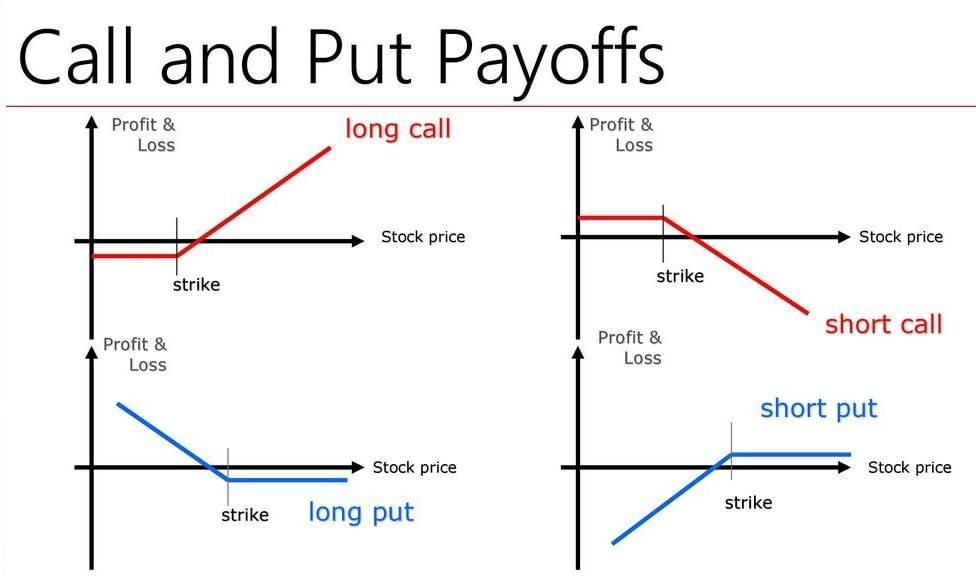In the labyrinthine world of financial markets, options trading stands out as a versatile tool that empowers investors to navigate the ebb and flow of stock prices. At the heart of this intricate strategy lie two fundamental concepts: puts and calls. Understanding these essential building blocks is paramount for unlocking the true potential of options trading.

Image: libertex.com
So, what exactly are puts and calls? Imagine you’re a savvy investor navigating the unpredictable stock market. A put option grants you the right, but not the obligation, to sell a certain number of shares at a predetermined price (strike price) on or before a specified date. Conversely, a call option affords you the right, but not the obligation, to buy a certain number of shares at the strike price on or before that same date.
These options essentially act as insurance policies, protecting investors from adverse market movements. Puts serve as a hedge against potential declines in stock prices, while calls provide a safety net against missed opportunities in rising markets. By skillfully maneuvering puts and calls, investors can tailor strategies that align with their unique risk tolerance and investment goals.
Call Options: Unlocking Upside Potential with Precision
Call options are the weapons of choice for investors who anticipate a rise in the underlying asset’s price. By purchasing a call option, you effectively secure the right to buy a specific number of shares at a fixed price, regardless of how high the stock price climbs. This strategic move allows you to capitalize on upward price movements without the full commitment of ownership.
Consider this scenario: You believe XYZ Corporation’s stock is poised for a bullish run. Instead of purchasing the shares outright, you could opt for a call option with a strike price of $100 and an expiration date of 6 months. If the stock price soars to $120 during that period, you have the option to exercise your right to buy the shares at $100, effectively netting a profit of $20 per share.
Of course, call options don’t come without their risks. If the stock price languishes below the strike price by the expiration date, your call option will expire worthless, resulting in the loss of your initial investment. The key is to carefully assess the market dynamics and make informed decisions based on sound research.
Put Options: Shielding Your Portfolio from Market Downturns
Put options, on the other hand, provide a sanctuary for investors fearing a downturn in the underlying asset’s price. By purchasing a put option, you acquire the right to sell a specific number of shares at a predetermined strike price on or before a specified date. This strategic maneuver shields you from potential losses if the stock price takes a nosedive.
Let’s explore a hypothetical scenario: Market sentiments indicate ominous clouds on the horizon, and you’re concerned about the potential impact on ABC Corporation’s stock. To safeguard your portfolio, you could purchase a put option with a strike price of $80 and an expiration date of 3 months. If the stock price plummets to $70 within that timeframe, you can exercise your right to sell the shares at $80, mitigating your losses and preserving your investment.
Just like call options, put options also carry inherent risks. If the stock price rebounds above the strike price by the expiration date, your put option will expire worthless, resulting in the loss of your initial investment. Therefore, thorough research and prudent judgment are essential when venturing into the realm of put options.

Image: sites.psu.edu
What Is A Put And A Call In Options Trading
Conclusion: Mastering Puts and Calls for Strategic Investing
Puts and calls, the cornerstones of options trading, empower investors with unparalleled flexibility and risk management capabilities. By understanding their intricacies and applying them strategically, you can navigate the turbulent waters of the financial markets with confidence.
Remember, options trading is a double-edged sword that can amplify both profits and losses. Embark on this journey with prudence, conduct thorough research, and constantly refine your knowledge. Embrace the power of puts and calls, and let them be the guiding lights on your path to financial success.






